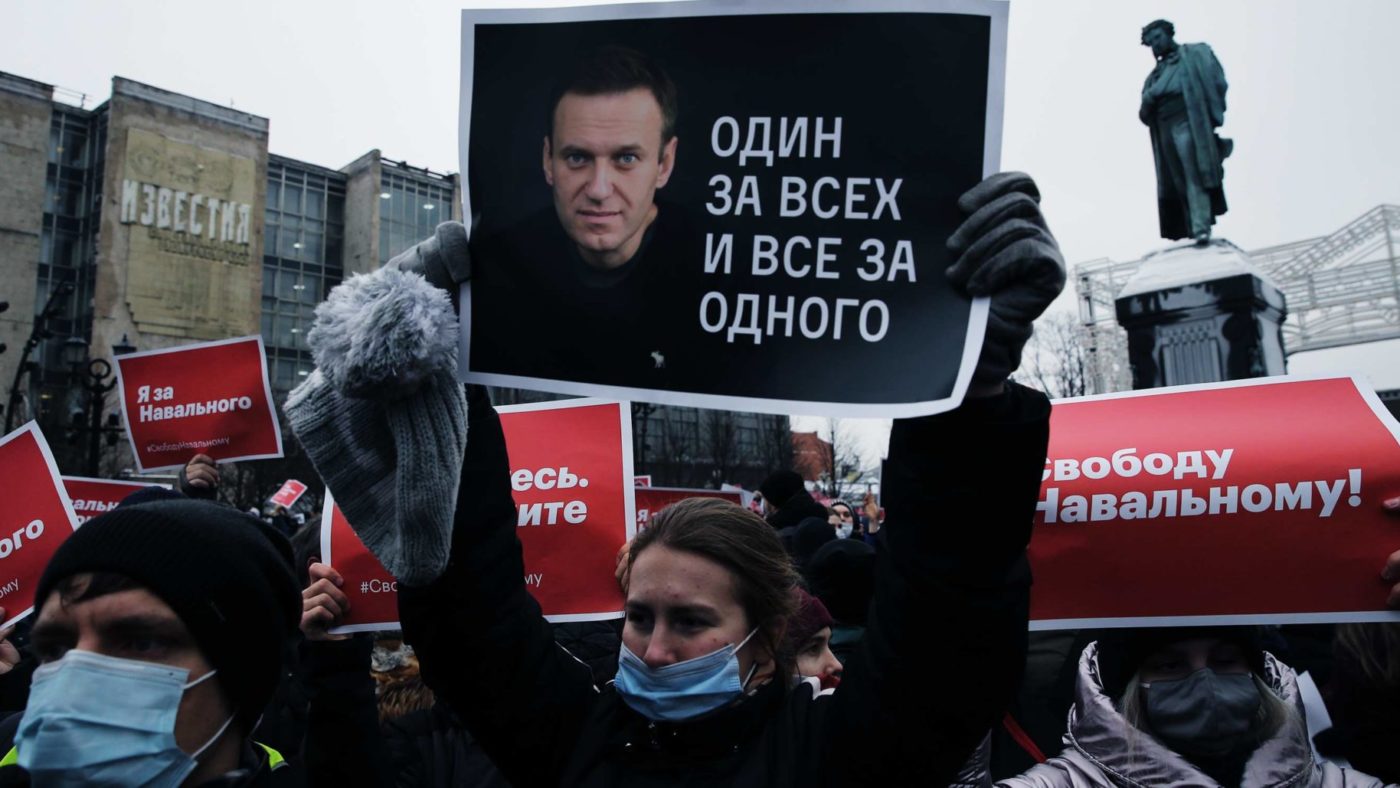In the last six days, Alexei Navalny’s YouTube exposé of Vladimir Putin’s billion-dollar palace has reached over 85 million viewers. Its impact has spread beyond the virtual world, prompting furious denials from the Kremlin and bringing tens of thousands of Russians onto the streets to protest.
Looking at the size and scale of Saturday’s protests, it is clear Navalny’s anti-corruption cause has cut through. Over 100,000 people took to the streets across Russia’s 11 time zones, the highest numbers for an unsanctioned protest since 2012. The demonstrations signalled discontent with Russia’s corrupt elites, including Putin, as much as support for Navalny personally.
In Moscow, according to Reuters, some 40,000 people joined the protests. To appreciate the meaning of these figures, we must remember that any Russian who decides to protest does so knowing they face a very real risk of being beaten, fired, expelled, or imprisoned. In other words, the number of protestors does not equal the number of Navalny’s supporters; it equals those who would risk prison for his cause.
This commitment also manifested itself in the protestors’ new-found readiness to fight back. Normally Russian opposition protests are studiedly docile, even in the face of appalling police brutality, but this time protestors counter-attacked with snowballs and even, on a couple of occasions, their fists. This is a sign of the anger and disgust at the bespredel – or limitlessness – of the greed ingrained in the Putinist system.
Significantly, there were many first-time demonstrators on Saturday, with one survey showing that 44% of respondents were protesting for the first time ever. They were also protesting in new places; while Navalny’s team originally planned events in 60 cities, demonstrations took place in over 100, from the -50°C cold of Yakutsk to the warmer climes of the Caucasus, traditionally hostile to Navalny’s nativist roots. During the pandemic, the regions have suffered much more than Moscow and Petersburg, with local economies and living standards squeezed, so it’s perhaps unsurprising that provincial Russia has been angered by the obscene wealth depicted in Putin’s Palace.
Saturday’s protests provide Navalny’s team with much to celebrate, but it is important to remember that a protest is best used to measure mobilisation capacity, not change power. It is a means and not an end. So, what comes next?
The Anti-Corruption Foundation have called for more protests this Saturday, hoping to build on last weekend’s success, including by converting anger in the regions at falling living standards into support for Navalny’s larger anti-corruption cause. Building a broader coalition is imperative: as recently as November, only 20% of Russians approved of the opposition leader, while 50% disapproved. A significant number of Russians believe he works for foreign spy agencies, a theory advanced by President Putin himself. In a country where all major news outlets are directly or indirectly state-controlled, beliefs like these may not be surprising, but they do still pose a real obstacle, especially now the Kremlin media is upping the ante.
Until recently, state-aligned media essentially ignored Navalny and politicians refused to even use his name. On Sunday evening, the Kremlin’s propagandist-in-chief Dmitrii Kiselev launched a direct personal attack on Navalny, describing him as a “political paedophile” paid by the West to wreak havoc on Russia. Evidently, the Kremlin now thinks their best chance at emerging from the palatial scandal unscathed is to attack the opposition leader personally, characterising him as a return to the chaos and national humiliation many Russians experienced in the 1990s.
The Kremlin is adept at exploiting the traumatic memory of the 1990s, using it to discredit the West and Russia’s own liberal opposition. But Navalny is not a liberal – he comes from the nationalist scene – and he can play the 1990s card right back at Putin. In fact, Navalny can play it better because, unlike Putin, he is telling the truth: numerous researchers, journalists, and analysts have linked Putin to the shadiest schemes in 1990s ‘Bandit Petersburg’, as is recounted in Putin’s Palace. It is much easier to change the hero than the story. Navalny’s team should make use of this and every opportunity they have to turn the 1990s narrative back onto Putin and to target the President personally.
After all, Navalny’s best chances of staying free – and alive – rest on his team’s ability to provoke outrage on a large scale. The more public interest and indignation Navalny can spark through his investigations, the harder it becomes for the authorities to kill or imprison him for a long time without sparking mass unrest, the Kremlin’s greatest fear. Instead, the Russian government would be forced to release him to house arrest or to engage in more low-level prosecutions and persecutions, aimed at wearing the opposition leader down.
Would this tactic stop Navalny? Given the man has only come back stronger from a Novichok attack, you wouldn’t bet the house – or palace – on it.
Click here to subscribe to our daily briefing – the best pieces from CapX and across the web.
CapX depends on the generosity of its readers. If you value what we do, please consider making a donation.


